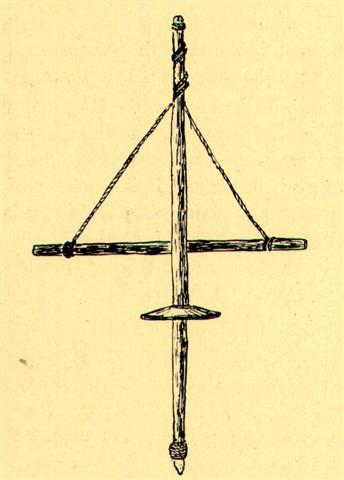Hevelius has ω in his
illustration, but this late rising star is not in
my list. I decided to update it with this and
maybe other omitted stars in Sagittarius.
A quick
look on the star chart reveals my list seems to be
complete up to and including Alrami (α), but beyond
are υ, χ, ρ, ω, ι, θ, and κ.
19 (incl.
Sham) + 7 = 26,
and Sagittarius is in the southern hemisphere.
However, closer
examination revealed ρ and υ were rising somewhat earlier than Alrami:
|
ρ |
19h 21m 40.38s |
19h 21.673m |
293.6 |
|
υ |
19h 21m 43.62s |
19h 21.727m |
293.7 |
|
Alrami |
19h 23m 53.15s |
19h 23.886m |
294.2 |
|
χ |
19h 25m 16.45s |
19h 25.274m |
294.6 |
|
ι |
19h 55m 15.68s |
19h 55.261m |
302.2 |
|
ω |
19h 55m 50.23s |
19h 55.837m |
302.3 |
|
θ |
19h 59m 44.17s |
19h 59.736m |
303.3 |
|
κ |
20h 22m 27.48s |
20h 22.458m |
309.1 |
| |
ρ
Sagittarii |
3.92 |
17° 51′ S |
19h
18m |
293.6 |
| |
υ
Sagittarii |
4.52 |
15° 57′ S |
19h
18m |
293.7 |
|
Alrami |
α
Sagittarii |
3.96 |
40° 43′ S |
19h
20m |
294.2 |
| |
χ
Sagittarii |
5.02 |
24° 31′ S |
19h
22m |
294.6 |
| |
ι
Sagittarii |
4.12 |
41° 52′ S |
19h
52m |
302.2 |
|
Terebellum |
ω
Sagittarii |
4.70 |
26° 18′ S |
19h
52m |
302.3 |
| |
θ
Sagittarii |
4.37 |
35° 17′ S |
19h
56m |
303.3 |
| |
κ
Sagittarii |
5.60 |
42° 03′ S |
20h
19m |
309.1 |
|
Shaula 1 |
2 |
3 |
4 (600) |
5
(236) |
6 |
|
January 3 |
4 |
5 |
6
(736) |
7
(372) |
8 |
 |
 |
 |
 |
 |
 |
|
Ca11-4 |
Ca11-5 |
Ca11-6 (290) |
Ca11-7 |
Ca11-8 |
Ca11-9 |
|
tupu te raau i
te vai |
te moko |
te marama |
te kava |
manu rere |
te mauga hiku
hia |
|
λ
Lyrae (287.7),
Ascella (287.9),
Nunki (288.4),
ζ Cor. Austr. (288.5) |
Manubrium (288.8),
γ Cor. Austr. (289.3), τ Sagittarii (289.4), ι
Lyrae (289.5) |
δ
Cor. Austr. (289.8),
Al
Baldah,
Alphekka Meridiana (290.1), β Cor. Austr.
(290.2) |
Aladfar (291.1), Nodus II (291.5) |
ψ
Sagittarii (291.6), θ Lyrae (291.8) |
ρ
Sagittarii (292.6), υ Sagittarii (292.7),
Arkab Prior (293.0), Arkab Posterior,
Alrami (293.2) |
|
July
5 |
6 |
7
(188) |
8 |
9 |
10 |
|
Al
Tuwaibe' 10 |
11 |
12
(52) |
13 |
Heka
1 |
2 |
|
Alzirr (105.7), Muliphein (105.8) |
Wezen (107.1) |
no stars listed |
Wasat (109.8) |
Aludra (111.1) |
|
Shaula 7 |
8 |
9
(240) |
10 |
|
January 9 |
10 |
11 |
12
(377) |
 |
 |
 |
 |
|
Ca11-10 |
Ca11-11 (295) |
Ca11-12 |
Ca11-13 |
|
etoru inoino |
hakahagana hia to rima - te inoino |
|
χ
Sagittarii (293.6),
Deneb Okab (294.0) |
Albireo (295.5) |
no stars listed |
|
July 11 |
12
(193) |
13 |
14 |
|
Heka
3 |
4 |
5 |
6
(59) |
|
Gomeisa (111.6), ρ Gemini (112.1) |
Castor (113.4) |
no star listed |
Markab (114.7),
Procyon (114.9) |
|
Shaula 11 |
12 |
13
(244) |
Al
Naam 1 |
2 |
3 |
|
January 13 |
14 |
15 |
16 |
17 |
18 (383) |
 |
 |
 |
 |
 |
 |
|
Ca11-14 |
Ca11-15 |
Ca11-16 (300) |
Ca11-17 |
Ca11-18 |
Ca11-19 |
|
tupu toona rakau i te vai |
te moko |
te marama |
te kava |
ihe manu kara
etahi |
te mauga e hiku hia |
|
Sham
(297.8) |
Tarazed (299.3) |
Altair (300.3) |
ι
Sagittarii
(301.2), Terebellum (301.3) |
Alshain (301.6), ε Pavonis,
θ
Sagittarii
(302.3) |
μ
Pavonis (302.7) |
Terebellum (ω)
has its name from a 'borer', a kind of mollusc which makes
holes in ships.
"Terebellum
derives from a Latin word meaning borer or augur ...
Terebellum is a genus of sea snails, marine gastropod
mollusks in the family Strombidae, the true conchs ..."
(Wikipedia)
Quite suitable
because the 300 days from March 21 have ended and the 'Ship
of Sun' should sink down (†) here. Allen:
"ω, 4.8; A, 5; b,
4.7; and c, 4, forming a small
quadrangle on the hind quarter of the horse, were the
τετράπλερον of Ptolemy, which Bayer repeated in the Low
Latin Terebellum, still often seen for these stars´. The Standard
Dictionary gives it thus, but instead mentions the
components as ω, or α¹, b and e.
The Chinese knew this
little figure a Kow Kwo, the Dog's Country."

|





